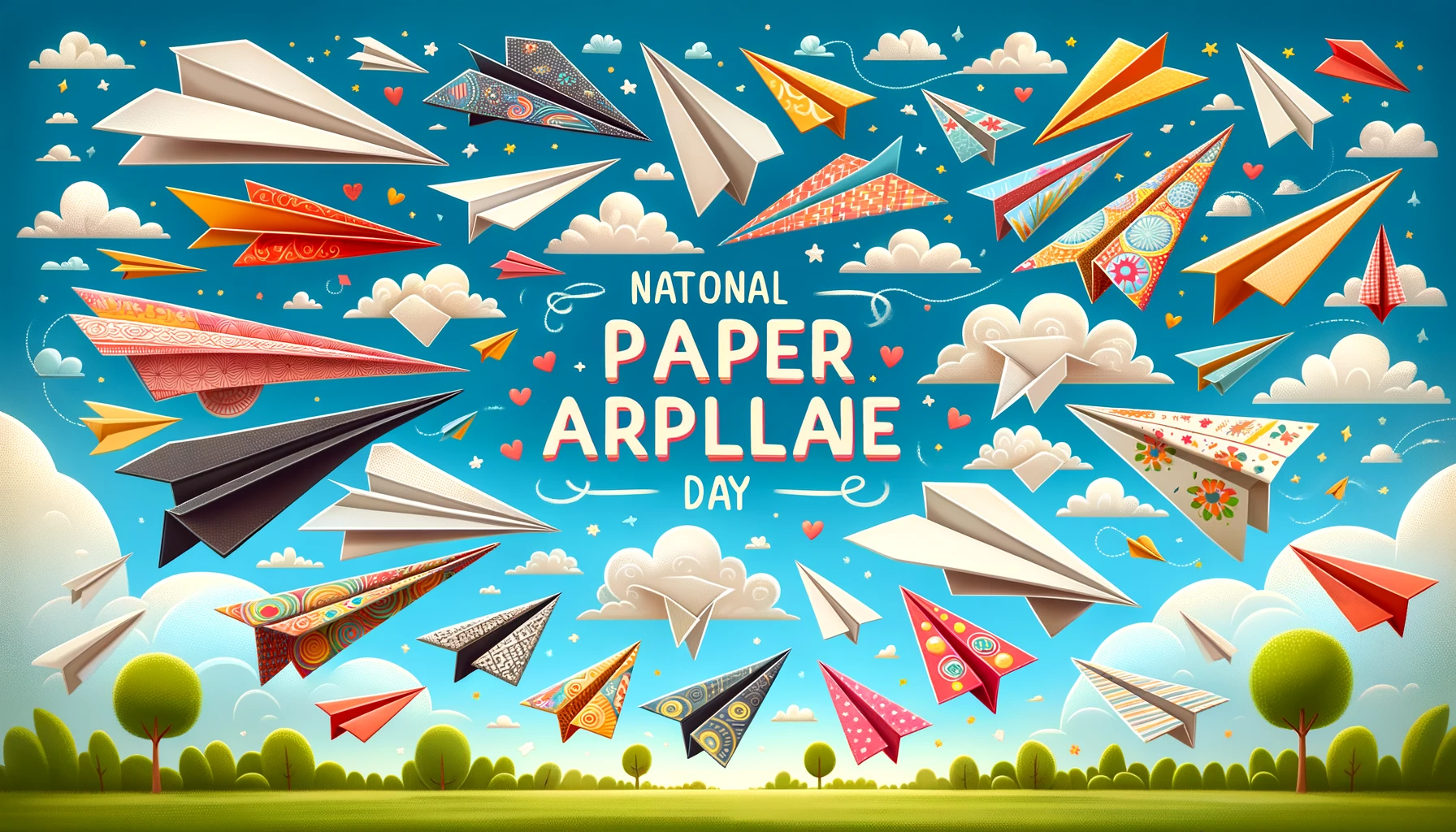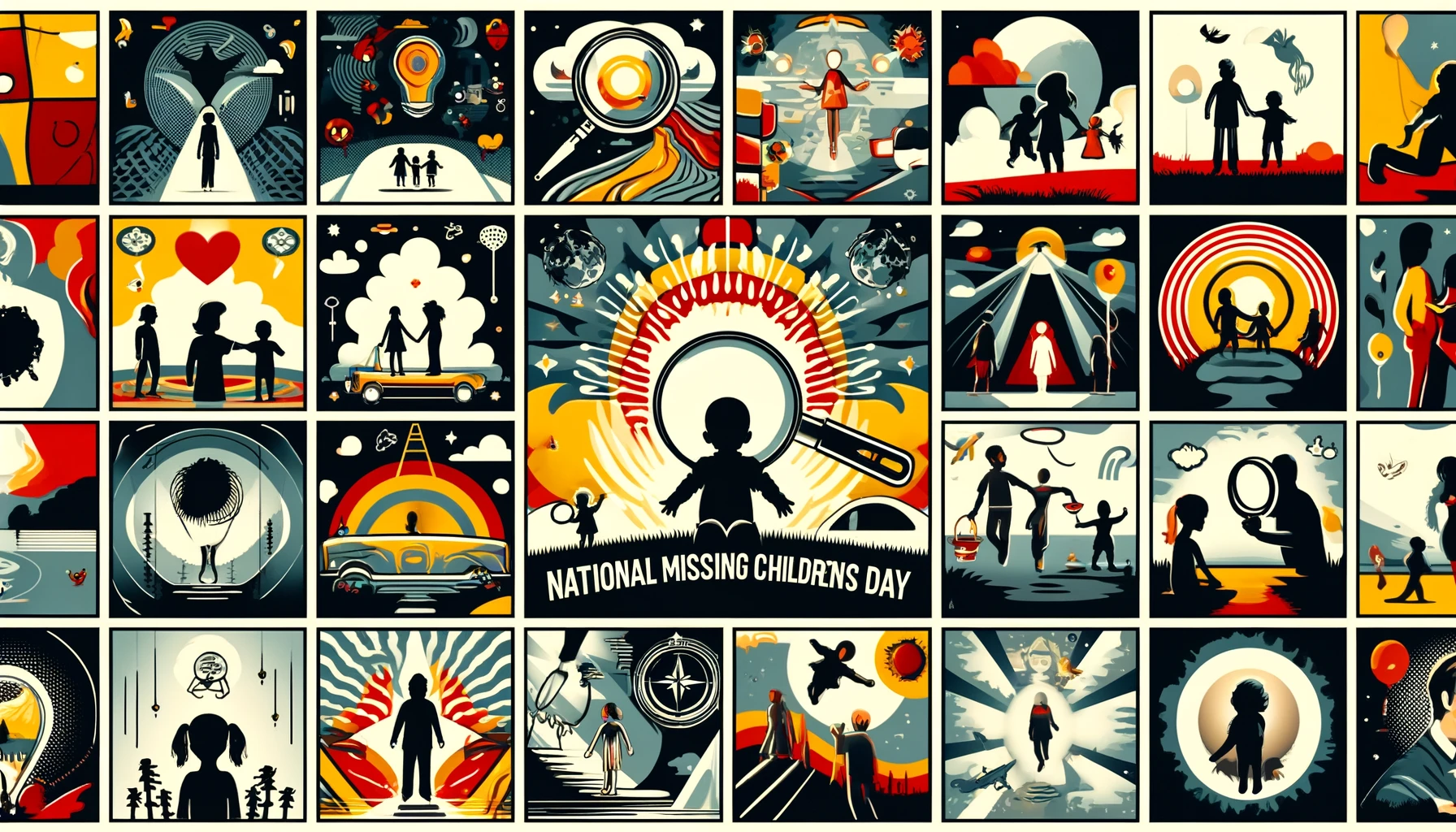Every year on May 26th, enthusiasts of all ages gather to celebrate National Paper Airplane Day, a day dedicated to the simple yet captivating art of paper airplane making. This unofficial holiday invites everyone to fold a piece of paper into an aerodynamic wonder and launch it into the sky. But beyond the fun, what makes this day so special?
National Paper Airplane Day is not just about the joy of flying paper creations; it’s about appreciating the blend of creativity, physics, and nostalgia that paper airplanes represent. This article explores the history, significance, ways to celebrate, and intriguing facts about these miniature flying machines.
History of National Paper Airplane Day
Origins of the Day
National Paper Airplane Day was established to encourage people to take a break from their daily routines and indulge in the simple pleasure of making and flying paper airplanes. While the exact origins of the day are unclear, it has grown in popularity over the years, becoming a beloved occasion for families, schools, and aviation enthusiasts.
Historical Context of Paper Airplanes
The history of paper airplanes dates back to ancient China, where paper was invented. However, the practice of folding paper to create flying objects gained significant momentum in Japan with the art of origami. In the early 20th century, paper airplanes became popular in Western cultures as well, with children and adults alike fascinated by the principles of flight. Over the years, paper airplane designs have evolved, incorporating scientific principles to enhance their performance.
The Educational and Cultural Significance of Paper Airplanes
Educational Value
Paper airplanes are more than just toys; they are valuable educational tools. Making and flying paper airplanes teach important concepts in physics and aerodynamics, such as lift, thrust, drag, and gravity. Through experimentation, individuals can learn about the forces that affect flight and the importance of design in achieving longer and more stable flights. This hands-on learning experience is particularly beneficial for students, making abstract scientific concepts tangible and engaging.
Cultural Impact
Paper airplanes have left a lasting mark on culture. They have been featured in movies, books, and art, symbolizing freedom, creativity, and the human desire to explore. In classrooms and offices worldwide, impromptu paper airplane contests break the monotony and bring a sense of playfulness. This cultural resonance highlights the universal appeal of paper airplanes, transcending age and geography.
How to Celebrate National Paper Airplane Day
Organize Competitions
One of the best ways to celebrate National Paper Airplane Day is by organizing competitions. These can range from simple distance challenges to more complex tasks like accuracy and airtime. Gather friends, family, or colleagues, set up a makeshift runway, and let the games begin. Competitions can be held indoors or outdoors, depending on the space available and the weather.
Workshops and Tutorials
Hosting workshops or tutorials is another fantastic way to celebrate. These sessions can teach participants various paper airplane designs, from the classic dart to more advanced models like the glider or the stunt plane. Providing step-by-step instructions and explaining the science behind each design can enhance the educational value and make the activity more engaging.
Community and Virtual Events
Encouraging community gatherings or school events can amplify the celebration. Schools can incorporate paper airplane activities into their science or art classes, while community centers can host family-friendly events. For those who prefer virtual celebrations, participating in online challenges or sharing designs and flight videos on social media platforms can connect enthusiasts worldwide.
Interesting Facts About Paper Airplanes
Paper airplanes have achieved impressive feats, with enthusiasts continually pushing the boundaries. The current world record for the longest flight distance by a paper airplane is an astonishing 226 feet and 10 inches, set by Joe Ayoob in 2012. Similarly, the record for the longest flight duration stands at 29.2 seconds, achieved by Takuo Toda in 2010. These records highlight the potential of paper airplanes when combined with skill and precision.
Famous Designs
Some paper airplane designs have gained fame for their exceptional flight characteristics. The Nakamura Lock, for example, is known for its stability and long flight time, making it a favorite among enthusiasts. Another popular design is the Bulldog Dart, renowned for its speed and distance. Each design has its unique features, allowing for a variety of flying experiences.
Science Behind the Flight
The flight of a paper airplane is governed by four main forces: lift, thrust, drag, and gravity. Lift is created by the wings as they move through the air, while thrust comes from the initial throw. Drag is the resistance the airplane faces as it moves, and gravity pulls it downward. Understanding these forces can help in designing airplanes that fly farther and more stably. Experimenting with different folds and weights can significantly impact performance.
The Fun Side of Paper Airplanes
Many people have fond memories of paper airplanes from their childhood. Whether it was a classroom competition or a lazy afternoon spent perfecting the perfect fold, paper airplanes have a way of bringing joy and nostalgia. Sharing personal stories and experiences can add a personal touch to the celebration of National Paper Airplane Day.
Creative Uses
Beyond traditional flying, paper airplanes can be used in various creative ways. They can be part of art installations, promotional events, or even scientific experiments. Some artists use them as canvases for intricate designs, while others create large-scale projects involving hundreds of paper airplanes. These innovative uses showcase the versatility and enduring appeal of paper airplanes.
Conclusion
National Paper Airplane Day is a celebration of creativity, science, and fun. From its historical roots to its educational and cultural significance, paper airplanes offer a unique way to engage with the principles of flight and enjoy a timeless activity.
Call to Action
As May 26th approaches, gather your friends and family, grab some paper, and start folding. Whether you’re participating in a competition, attending a workshop, or simply flying airplanes in your backyard, share your experiences and join the global community of paper airplane enthusiasts.
Closing Thought
In a world where technology often dominates our lives, the simple act of folding and flying a paper airplane reminds us of the joy in simplicity and the endless possibilities of imagination. Celebrate National Paper Airplane Day and let your creativity soar.
10 Interesting Facts About National Paper Airplane Day
- Ancient Origins: Paper airplanes date back to ancient China, where paper was invented.
- World Record Distance: The longest flight distance for a paper airplane is 226 feet 10 inches, set by Joe Ayoob in 2012.
- Longest Flight Time: The record for the longest flight duration is 29.2 seconds, achieved by Takuo Toda in 2010.
- Educational Tool: Making paper airplanes helps teach principles of physics and aerodynamics.
- Famous Designs: Popular designs include the Nakamura Lock and the Bulldog Dart, known for their stability and distance.
- Cultural Impact: Paper airplanes are featured in various movies, books, and art pieces, symbolizing freedom and creativity.
- Scientific Exploration: Experimenting with different paper airplane designs can help understand the four forces of flight: lift, thrust, drag, and gravity.
- Origami Connection: The practice of folding paper into airplanes is closely linked to the Japanese art of origami.
- Community Events: National Paper Airplane Day is celebrated with competitions, workshops, and community gatherings.
- Global Enthusiasm: People worldwide participate in virtual challenges and share their designs on social media platforms.












Celebrating the art of paper airplanes on National Paper Airplane Day. A nostalgic journey!
Paper airplane fun day ✈️
Very interesting!
National Paper Airplane Day sounds like a lot of fun. This article captures the playful spirit of the day.
National Paper Airplane Day is fun and creative. This article captures the joy and simplicity of folded flight perfectly. Well done!
The page about National Paper Airplane Day is very informative and engaging. It offers a detailed look at the history and significance of paper airplanes, along with some interesting facts and ways to celebrate. The information is well-organized and easy to read, making it a pleasure to navigate. This site is a fantastic resource for anyone wanting to learn more about National Paper Airplane Day.